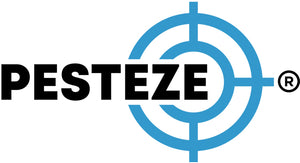RODENT-BORNE DISEASES: A COMPLETE SAFETY GUIDE

RODENT-BORNE DISEASES: A COMPLETE SAFETY GUIDE
SUMMARY
Rodents are more than just household pests—they are carriers of dangerous diseases that can spread through contact, bites, or contaminated food and surfaces. This guide explains the most common rodent-borne illnesses, their transmission methods, and effective ways to prevent infection to keep your home and community safe.
FEATURES
-
Common Diseases: Learn about Hantavirus, Leptospirosis, and Salmonella spread by rodents.
-
Transmission Methods: Understand how rodent droppings, bites, and urine carry pathogens.
-
Health Symptoms: Recognize warning signs early to seek timely medical attention.
-
Prevention Strategies: Reduce exposure through cleanliness and rodent-proofing.
-
Safe Cleanup Practices: Handle droppings and nests with protective gear and disinfectants.
-
Professional Assistance: Know when to contact pest control for safe rodent removal.
GUIDE DESCRIPTION
Rodent-borne diseases pose a serious risk to public health, especially in areas where rodent populations are high. Mice and rats can carry a wide range of pathogens that cause illnesses in humans, often transmitted through contaminated food, water, or air. Understanding these diseases and their prevention is crucial for maintaining a healthy environment.
Among the most common illnesses spread by rodents is Hantavirus Pulmonary Syndrome, a potentially fatal respiratory disease caused by inhaling particles from rodent urine or droppings. Leptospirosis, another bacterial infection, can spread through direct contact with contaminated water or soil, often causing fever, muscle pain, and, in severe cases, liver or kidney damage. Additionally, rodents can carry Salmonella bacteria, leading to food poisoning and gastrointestinal distress when food or cooking surfaces are contaminated.
Preventing rodent-borne diseases starts with effective sanitation and pest control. Homes and workplaces should be kept clean and free of clutter, especially in storage areas and kitchens. Food should be stored in airtight containers, and garbage should be disposed of promptly. Sealing cracks and gaps in walls, floors, and around pipes can prevent rodents from entering indoor spaces.
When cleaning up rodent droppings or nests, it’s essential to avoid sweeping or vacuuming, which can release infectious particles into the air. Instead, wear gloves, spray the area with disinfectant, and carefully wipe up waste with disposable paper towels. Properly dispose of all contaminated materials in sealed bags and wash hands thoroughly afterward.
In areas where infestations are severe, contacting professional pest control services is highly recommended. Experts can identify entry points, set up safe traps, and sanitize affected areas to reduce the risk of disease transmission.
By staying informed about rodent-borne diseases and practicing preventive hygiene, families and businesses can significantly lower their risk of infection. A proactive approach ensures not only protection from pests but also long-term health and safety for everyone.
- Aahna Barma


Comments 0